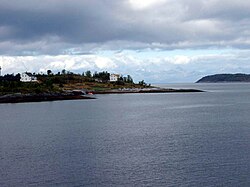무 타우리
Mu Tauri| 관측 데이터 에폭 J2000 이쿼녹스 J2000 | |
|---|---|
| 별자리 | 황소자리 |
| 우측 상승 | 04h 15m 32.05687s[1] |
| 탈위임 | 08° 53′ 32.4916″[1] |
| 겉보기 크기(V) | 4.27[2] |
| 특성. | |
| 스펙트럼형 | B3IV[3] |
| U-B색지수 | −0.51[4] |
| B-V색지수 | −0.05[4] |
| 아스트로메트리 | |
| 방사 속도(Rv) | +16.3±0.6km[5]/s |
| 적정운동(μ) | RA: +20.881[1]mas/yr Dec.: −22.789[1]mas/yr |
| 시차(시차) | 6.6651 ± 0.3319 마스[1] |
| 거리 | 490 ± 20 리 (150 ± 7 pc) |
| 절대치수(MV) | −1.45[2] |
| 세부 사항 | |
| 미사 | 6.7[6] M☉ |
| 루미도 | 462[2] L☉ |
| 표면 중력(log g) | 3.75[7] cgs |
| 온도 | 16,980[7] K |
| 금속성 [Fe/H] | -0.16[2] 덱스 |
| 회전 속도(v sin i) | 89km[8]/s |
| 나이 | 252[9] 마이어 |
| 기타 지정 | |
| 데이터베이스 참조 | |
| 심바드 | 자료 |
μ 타우리(Tauri)는 라틴어로 무 타우리(Mu Tauri)로, 적도 별자리의 단일[11] 별이다.청백색의 빛깔을 띠며 육안으로는 4.27의 겉보기 시야로 희미하게 보인다.[2]이 별은 시차를 기준으로 태양으로부터 약 490광년 떨어진 곳에 위치하며 방사상 속도 +16km/s로 더 멀리 떠내려가고 있다.[1][5]
이 물체는 B형 아거성 별과 일치하는 B3IV의 별 분류를 가지고 있다.[3]과거에 이 별은 가변 방사상 속도를 가진 것으로 생각되었지만, 현재는 일정하다고 간주된다.[12]2억 5천[9] 2백만 년 전의 것으로, 89 km/s의 예상 회전 속도로 회전하고 있다.[8]이 별은 태양의 6.7배[6] 질량을 가지며 광구에서 16,980K의 유효 온도로 태양의 462배의[2] 광도를 방출하고 있다.[7]18μm의 파장에서 적외선 과열을 방출하고 있어 희미한 따뜻한 파편 원반의 후보 숙주가 되고 있다.[13]
참조
- ^ a b c d e f Brown, A. G. A.; et al. (Gaia collaboration) (August 2018). "Gaia Data Release 2: Summary of the contents and survey properties". Astronomy & Astrophysics. 616. A1. arXiv:1804.09365. Bibcode:2018A&A...616A...1G. doi:10.1051/0004-6361/201833051.이 소스에 대한 가이아 DR2 기록 VizieR.
- ^ a b c d e f Anderson, E.; Francis, Ch. (2012). "XHIP: An extended hipparcos compilation". Astronomy Letters. 38 (5): 331. arXiv:1108.4971. Bibcode:2012AstL...38..331A. doi:10.1134/S1063773712050015. S2CID 119257644. Vizier 카탈로그 항목
- ^ a b Lesh, Janet Rountree (December 1968), "The Kinematics of the Gould Belt: an Expanding Group?", Astrophysical Journal Supplement, 17: 371, Bibcode:1968ApJS...17..371L, doi:10.1086/190179
- ^ a b Mallama, A. (2014). "Sloan Magnitudes for the Brightest Stars". The Journal of the American Association of Variable Star Observers. 42: 443. Bibcode:2014JAVSO..42..443M.Vizier 카탈로그 항목
- ^ a b Gontcharov, G. A. (2006). "Pulkovo Compilation of Radial Velocities for 35 495 Hipparcos stars in a common system". Astronomy Letters. 32 (11): 759–771. arXiv:1606.08053. Bibcode:2006AstL...32..759G. doi:10.1134/S1063773706110065. S2CID 119231169.
- ^ a b Tetzlaff, N.; et al. (2011). "A catalogue of young runaway Hipparcos stars within 3 kpc from the Sun". Monthly Notices of the Royal Astronomical Society. 410: 190–200. arXiv:1007.4883. Bibcode:2011MNRAS.410..190T. doi:10.1111/j.1365-2966.2010.17434.x. S2CID 118629873. Vizier 카탈로그 항목
- ^ a b c Soubiran, Caroline; et al. (2016). "The PASTEL catalogue: 2016 version". Astronomy & Astrophysics. 591: A118. arXiv:1605.07384. Bibcode:2016A&A...591A.118S. doi:10.1051/0004-6361/201628497. S2CID 119258214.
- ^ a b Hoffleit, D.; Warren, W. H. (1995). "Bright Star Catalogue". VizieR On-line Data Catalog: V/50. Originally Published in: 1964BS....C......0H (5th Revised ed.). 5050. Bibcode:1995yCat.5050....0H.
- ^ a b Gontcharov, G. A. (November 2012), "Spatial distribution and kinematics of OB stars", Astronomy Letters, 38 (11): 694–706, arXiv:1606.09028, Bibcode:2012AstL...38..694G, doi:10.1134/S1063773712110035, S2CID 119108982
- ^ "mu Tau". SIMBAD. Centre de données astronomiques de Strasbourg.
- ^ Eggleton, P. P.; Tokovinin, A. A. (September 2008). "A catalogue of multiplicity among bright stellar systems". Monthly Notices of the Royal Astronomical Society. 389 (2): 869–879. arXiv:0806.2878. Bibcode:2008MNRAS.389..869E. doi:10.1111/j.1365-2966.2008.13596.x. S2CID 14878976.
- ^ Percy, J. R.; Lane, M. C. (May 1977). "Search for Beta Cephei stars. I - Photometric and spectroscopic studies of northern B-type stars". Astronomical Journal. 82: 353–359. Bibcode:1977AJ.....82..353P. doi:10.1086/112057.
- ^ Ishihara, Daisuke; et al. (May 2017). "Faint warm debris disks around nearby bright stars explored by AKARI and IRSF". Astronomy & Astrophysics. 601: 18. arXiv:1608.04480. Bibcode:2017A&A...601A..72I. doi:10.1051/0004-6361/201526215. S2CID 55234482. A72.



